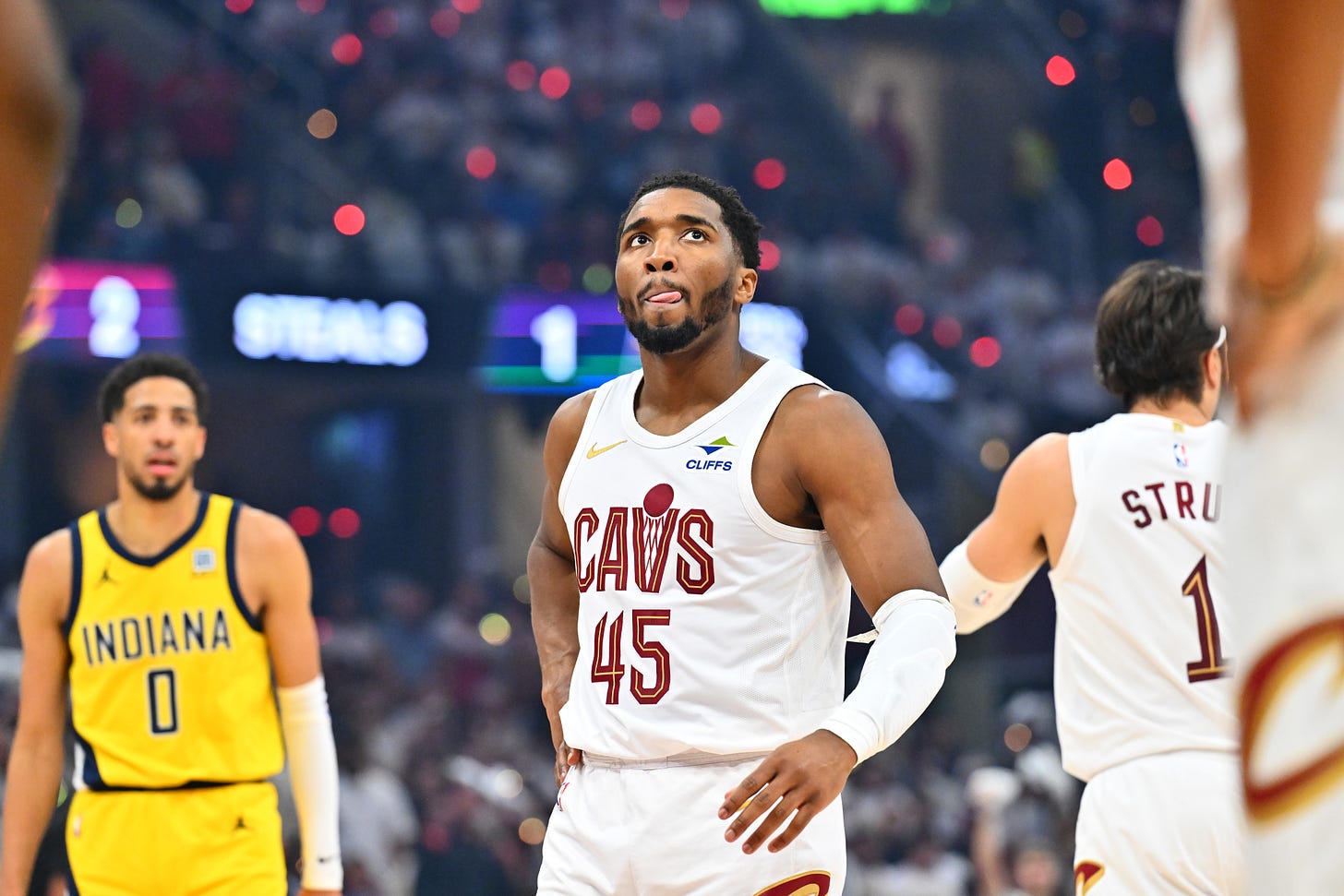Incandescent fitness
A new level

The Cleveland Cavaliers rolled the Heat in the first round of the 2025 playoffs, outscoring them by 122 over the four-game sweep. It’s like Cleveland did five games’ worth of scoring in four games.
That, and winning 64 of 82 regular season games, earned the Cavs a second-round date against the team with the worst record of the four East teams remaining: the Indiana Pacers.
The Cavaliers lost Game 1 to the Pacers at home in a fluke. Not even Michael Jordan’s Bulls won every game. Indiana isn’t the best shooting team in the world, but that night they made a stupid 19 of 36 3-point…


